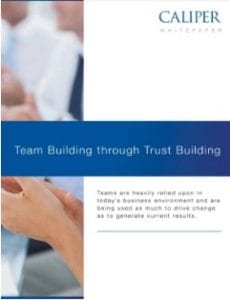Forward-thinking organizations know that long-term success requires more than innovative product development and continuous improvement of operational efficiency. It also demands a sound talent-management strategy, because developing good products and streamlining operations can only happen when you have the right people in place to drive these objectives—as well as a pipeline of high-potentials to lead such initiatives in the future.
Many smaller companies lack the internal resources to develop effective applicant-screening tools or to identify future leaders. As a result, they seek help from talent-development firms that provide access to the scientifically validated performance competencies often used today for measuring performance potential of job candidates and existing staff.
However, many larger organizations have put effort and money into developing their own competencies, performance indicators, or “values” they expected their employees to demonstrate. These companies may be hesitant to partner with an outside firm, perhaps assuming their internal criteria are unique and that trying to collaborate with consultants will only lead to confusion and redundancy. In actuality, such organizations are only getting very limited benefit from the criteria they developed, as they are unlikely to have a formalized measuring and reporting system in place to ensure their applicants and employees indeed meet those criteria.
Which is why it’s ultimately more cost-effective and strategically beneficial to partner with that talent-development firm, provided that firm offers competency mapping.
Competency mapping is a process whereby the consulting firm’s experts convert a client company’s performance criteria into standardized competencies.
“With a thorough understanding of a client’s existing competencies and definitions—and how they relate to the company’s strategic goals—we are able to align those competencies to our Competency Library through a mapping procedure,” says Tara Gullans, an IO Psychologist with Caliper. “Many clients have benefited from this method because it allows them to take advantage of Caliper’s validated competency formulas without having to tear down their existing framework.”
The result is enterprise-wide consistency in assessing applicants while still retaining the performance criteria and terminology familiar to current managers and HR staff. Companies also gain the advantage of unified reporting, as Caliper has the report-building technology and expertise to present the findings in a customer-friendly format.
Gullans points out, though, that not every performance indicator will match 100 percent to a Caliper competency.
“Competency mapping is a complex scientific process. If a client’s internal performance criteria are especially unusual and make mapping difficult, we can dig even deeper and build trait formulas that match their competencies and language.”
Given that this trait-validation approach is such an involved and time-consuming process, Gullans suggests it should be employed only for specific, high-volume positions rather than for general use across an entire population of employees.
Think of taking a trip to a foreign country where you don’t speak the local tongue. Wouldn’t it be great to have a universal translator that simulates a common language everyone understands equally? When it comes to assessing employees and applicants relative to their key performance indicators, competency mapping functions almost the same way, helping to improve standardization and consistency across your enterprise.

